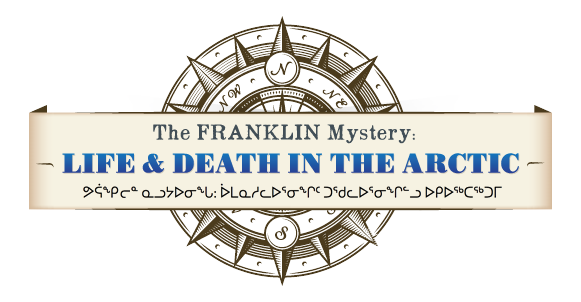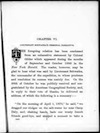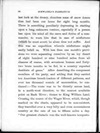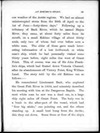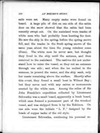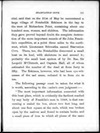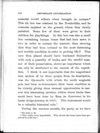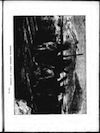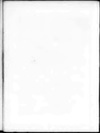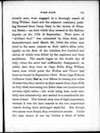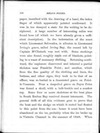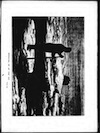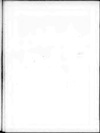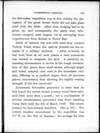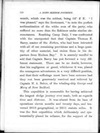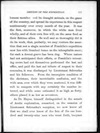From Schwatka's Address to the American Geographical Society (1882)
The reader... may be glad to hear what was said by Lieutenant Schwatka, the commander of the expedition, to whose prudence and resolution its success was mainly due. On the 28th of October he was publicly received and congratulated by the American Geographical Society, and, in reply to their vote of thanks, he delivered an address, of which the following is a summary:—
[ … ]
Following up a tributary of Back River, which he named Hayes River, they came, at about forty miles from its mouth, on a small Eskimo village of about thirty souls, only two of whom had ever before seen a white man. The elder of these gave much interesting information of a lost kodloonah, or white man's ship, which he had personally visited some thirty years before, eight miles due west of Grant Point. This, of course, was one of Sir John Franklin's ships, which had floated down Victoria Channel, after its abandonment off Victory Point, King William Land. The story told by the old Eskimo ran as follows:—
He remembered Lieutenant Back, who explored the Great Fish River in 1834, and minutely described his meeting with him at the Dangerous Rapids. The next white man he saw was a dead one, in a large ship eight miles off Grant Point. The body was in a bunk in the after-part of the vessel, which had " four big sticks," one pointing out, and the others standing up. A small boat hung from the davits; this they cut down. Some three or four of the ship's sails were set. Many empty casks were found on board. A large pile of dirt on one side of the cabin door on the snow showed that the cabin had been recently swept out. On the mainland were tracks of white men who had probably been hunting for deer. He saw the ship in the spring, before the spring snows fell, and the tracks in the fresh spring snows of the same year, about the time the young reindeer come (June). The white men he never saw, but thought they lived in the ship until the autumn, and then removed to the mainland. The natives did not understand how to enter the vessel, so they cut an entrance through one side ; and when the ice melted in the summer, in poured the water, and the ship sank, only her masts remaining above the surface. Shortly after this event, they found a small boat in Wilmot Bay ; but they never met with any cairns or monuments erected by the white men. Among the relics of Sir John Franklin's expedition collected by Lieutenant Schwatka was a small board, apparently a bunk board, which once formed a permanent part of the wrecked vessel, and was stripped from it by the Eskimos. On one side were the initials "L. F.," designed by the heads of copper tacks of the old style.
Lieutenant Schwatka, continuing his personal recital, said that on the 31st of May he encountered a large village of Netchellik Eskimos in the bay to the west of Richardson Point, containing about one hundred men, women, and children. The information they gave proved beyond doubt the complete destruction of the more important records of Sir John Franklin's expedition, at a point three miles to the north- west, which Lieutenant Schwatka named Starvation Cove. There, too, the Netchelliks discovered a small boat on its keel, with skeletons in and around it ; probably the small boat spoken of by Dr. Rae, Sir Leopold McClintock, and Captain Hall, all of whom estimated the number of the dead at from forty to fifty. The Eskimos, however, who had been eye-witnesses of the sad scene, reduced it to from six to ten.
The following passage must be taken for what it is worth, according to the reader's own judgment :—
"The most important information connected with this boat place, which is evidently the farthest reached by any body of Franklin's men in 1848, is that concerning a sealed tin box, about two feet long, and about one foot square at the ends, which was broken open by the natives and found to contain books, and a small piece of iron to which all pieces of the same material would adhere when brought in contact. This tin box was retained by the Netchelliks, and its contents emptied on the ground, where they slowly perished. Some few of them were given to their children for playthings. In this box was also a small box containing human bones that had been sawn in two in order to extract the marrow, thus showing that they had been reduced to the most distressing and terrible condition in order to prolong life.* That men thus placed should have burdened themselves with such a quantity of books, and the careful manner of their preservation, shows an importance which can only be attributed to the records of the expedition. I think it not improbable that the magnetized iron spoken of by these people, from its description, was the dip-needle with which the north magnetic pole had been re-determined, their beset condition in its vicinity giving them unusual opportunities to narrow this interesting problem within closer limits than could have been done by Ross, its discoverer, in his hasty sledge-journey in 1831. This instrument would be a valuable historical relic."
* This seems most improbable. Why should the bones have been preserved in a tin box?

